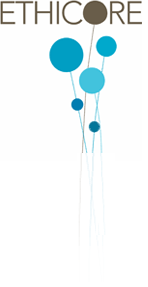by Rachael Clay
The INGO sector is immature in innovation terms, as demonstrated by the Bond Innovation Audit. The vision to transform lives, systems and models are compelling organisations to innovate. But often we’re missing a strategic, systematic approach which is driven by AMBITION. Organisations need to define their innovation ambition first, then set out the formal structures, processes, roles, resources and incentives to deliver consistently, and communicate that ambition clearly.
Other sectors have led the way in creating the climate, capability and commitment to innovation. H. Igor Ansoff developed the Innovation Ambition Matrix in 1957. It describes the work to optimise existing ‘products’ in the CORE; expand into adjacent markets or incremental products in ADJACENT; and invent new products or create new markets in TRANSFORMATIONAL. A diversified Industrial Company would have a ratio of 70% core, 20% adjacent and 10% transformational, according to Nagi and Tuff. Leading consumer goods companies have ratios more like 80%, 18%, 2%. If we shift the language to ‘interventions’ instead of products, and ‘needs’ instead of customers, INGOs can develop an innovation portfolio that aligns with their strategic ambition.
Image adapted from H. Igor Ansoff’s Innovation Ambition Matrix
Defining your innovation ambition will enable you to clearly assess the level of risk you are ready to take, balanced with the scale of impact you seek. The first meaningful step is for the Board to discuss, ‘what is our innovation ambition?’ Innovation ambition pays back inversely. The greatest return, but also risk and disruption, comes from transformational innovation. Planning a portfolio of innovation focuses the minds on the kind of innovation required to create the transformations desired.
As new and complex partnerships are raising expectations and funders are demanding innovation and impact data, new entrants are disrupting the system. The question remains whether the ‘incumbent INGOs’ have the ambition to be the necessary disruptor or whether they will end up as the disrupted? INGO’s need to rebalance the innovation portfolio for greater long-term rewards, extending and adapting to adjacent areas and truly transformational innovation.
In the coming weeks, Ethicore will be sharing the Innovation Series, a set of blogs and infographics, to stimulate systematic and strategic innovation. From establishing the innovation process through to tools to support idea generation, please read and share to get innovation ambition on the agenda of our Boards.

